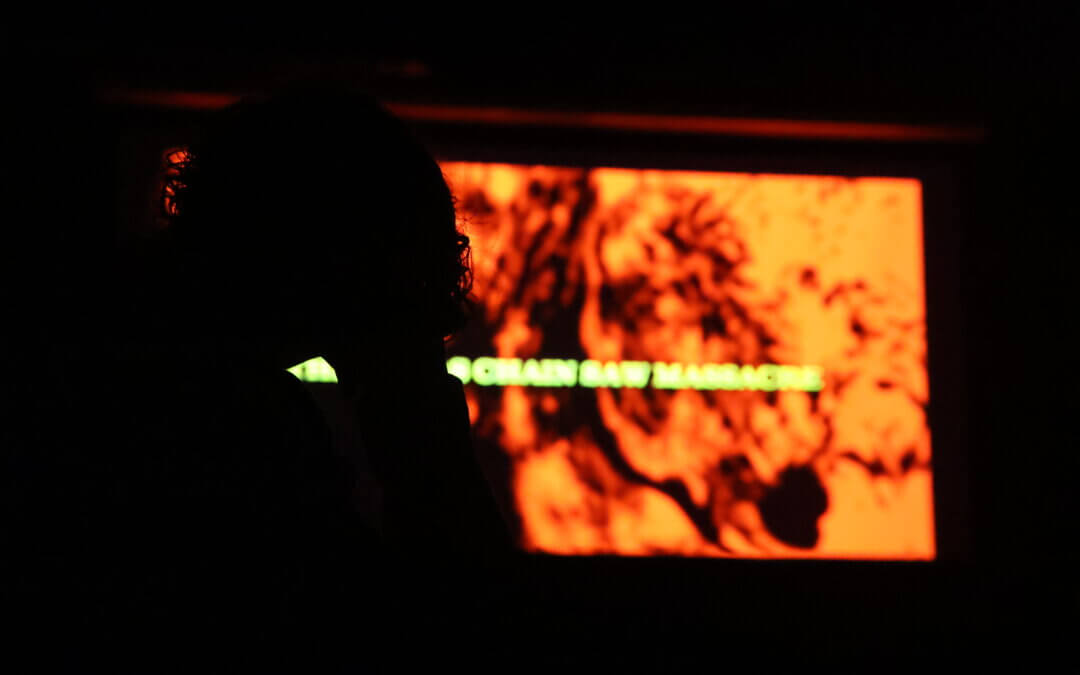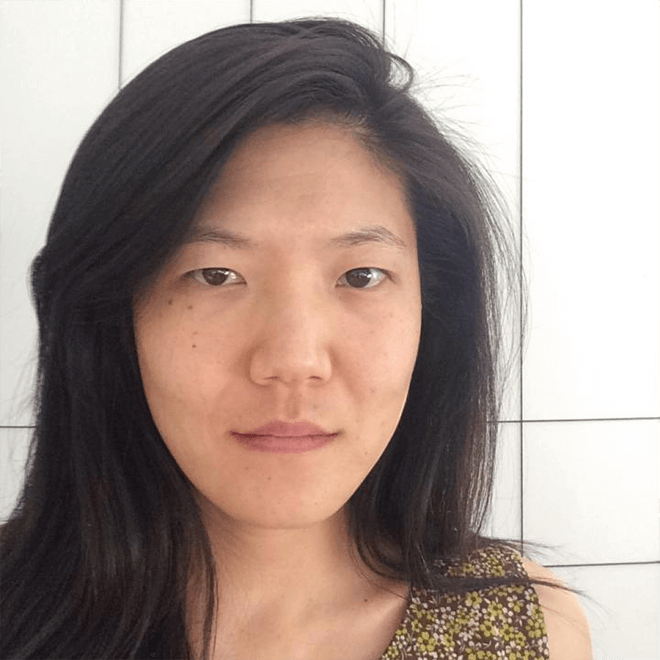
Ever since Caroline Key was a little girl, she’s been curious about the things that frighten us.
She recalls waking in the middle of the night at a slumber party and finding her friend’s parents settled on the couch watching a horror movie. She peeked over the cover of her sleeping bag, catching glimpses of the film, because, as she tells it: “I felt compelled to understand what it was. There’s like, a little bit of a taboo, or a mystique around it.”
Now a film professor at Mason Gross School of the Arts, Key remains fascinated by the scary stories that tug at us. But Rutgers Filmmaking students enrolled in her “Horror Film Production” course this fall aren’t after a quick fix of jump scares or gross-out gags. They’re delving into horror not only as a film genre, but as a visceral experience.
“Engaging with horror films is like a rite of passage, between being young and being an adult,” Key says.
While the syllabus includes typical fare like Halloween and The Texas Chainsaw Massacre, students are also assigned experimental films, documentaries, and even performance art pieces. John Waters’s ultra-camp Pink Flamingos makes the list, in addition to footage from artist and MGSA alum Pope L.’s “crawls” through New York City, a series of provocative performances that interrogate our perception of race and social norms.
By the end of the semester, students will have produced one piece of creative writing, one non-narrative “horror” short film, and one final film, each in response to the material they’ve studied.
And all along, Key says, she and the students ask two central questions: “What is the world telling us to fear? And what does that mean?”
Chloe Chowaniec (BFA’25), who took “Horror Film Production” with Key in 2022, says the class showed her a new perspective on the power of sound.

Rutgers Filmmaking professor Caroline Key has been teaching the conceptual elements of horror in her “Horror Film Production” course for six years.
“The students ask two central questions: ‘What is the world telling us to fear? And what does that mean?’” –Film professor Caroline Key
She cites a short film titled Untied, which includes scenes of violence against women.
“The sound you’d expect to accompany it is either never heard or delayed,” Chowaniec says, mentioning that the violence is overlaid by an incessant dial tone, as opposed to, say, screams. “I hadn’t thought of using sound in that way before.”
For Chowaniec’s final project, she chose to create a film about being cursed. Titled Facendo Le Corna, (Italian for “Making Horns”), the five-minute piece includes a synth score that she composed herself.
“I wanted to make the score moody and slow, with the tone becoming flatter and flatter as the film went on,” she says. Chowaniec’s goal was to invoke similar feelings of disjointedness and discomfort she experienced while watching (and hearing) certain films.
But the goal of the assignment, and of the course, isn’t to create the next Halloween blockbuster, but to understand why we make them in the first place.
“Students come in and they delve into things that might be difficult,” Key says—often-fraught topics like gender, race, sexuality, things that might unsettle them, “and we try to create a supportive environment, and they hopefully come out through the other side, [and] stronger for it.”
Image credit: Liadain O’Toole

